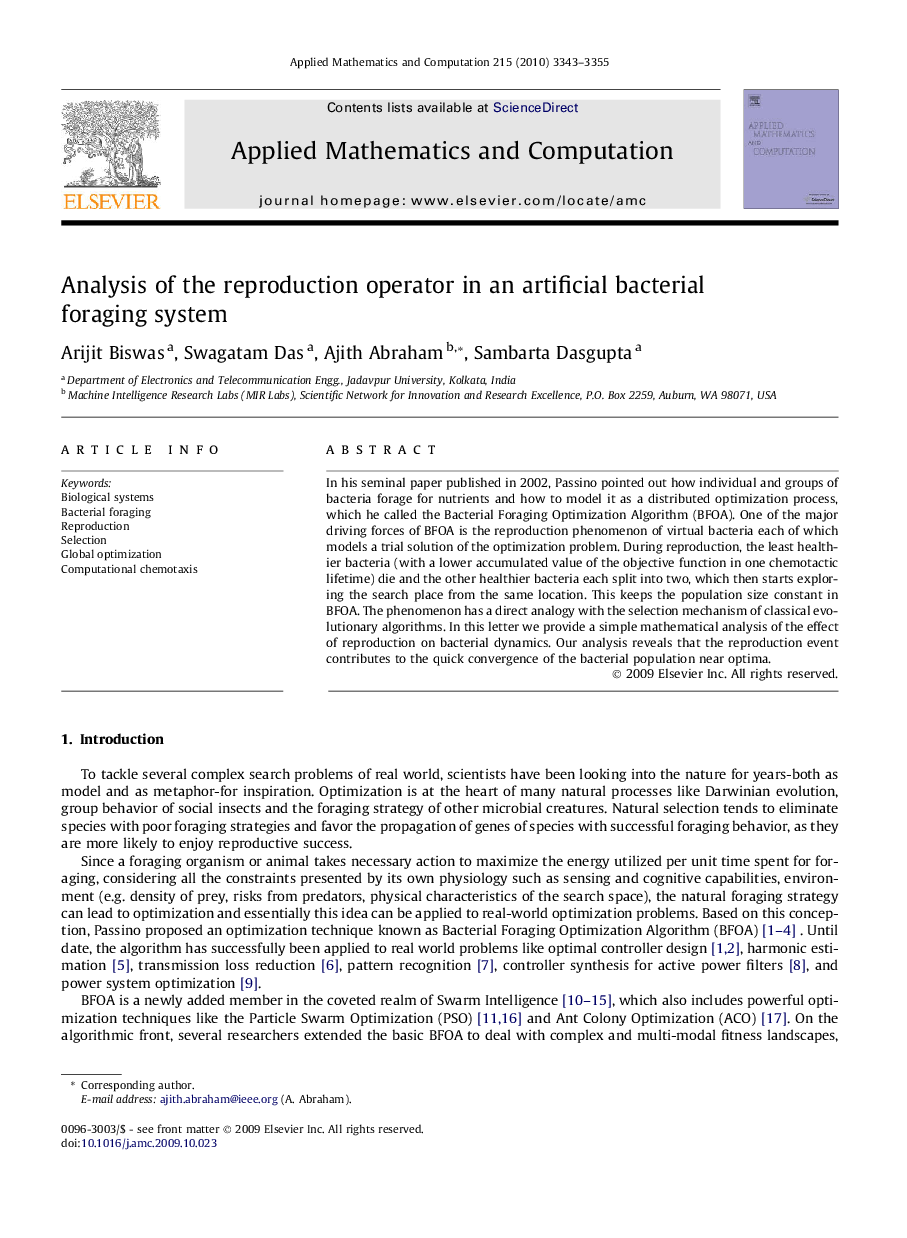| Article ID | Journal | Published Year | Pages | File Type |
|---|---|---|---|---|
| 4632406 | Applied Mathematics and Computation | 2010 | 13 Pages |
In his seminal paper published in 2002, Passino pointed out how individual and groups of bacteria forage for nutrients and how to model it as a distributed optimization process, which he called the Bacterial Foraging Optimization Algorithm (BFOA). One of the major driving forces of BFOA is the reproduction phenomenon of virtual bacteria each of which models a trial solution of the optimization problem. During reproduction, the least healthier bacteria (with a lower accumulated value of the objective function in one chemotactic lifetime) die and the other healthier bacteria each split into two, which then starts exploring the search place from the same location. This keeps the population size constant in BFOA. The phenomenon has a direct analogy with the selection mechanism of classical evolutionary algorithms. In this letter we provide a simple mathematical analysis of the effect of reproduction on bacterial dynamics. Our analysis reveals that the reproduction event contributes to the quick convergence of the bacterial population near optima.
